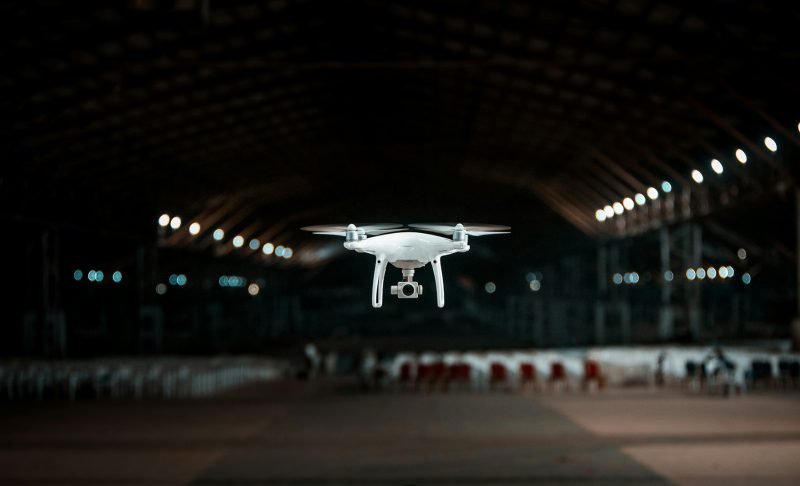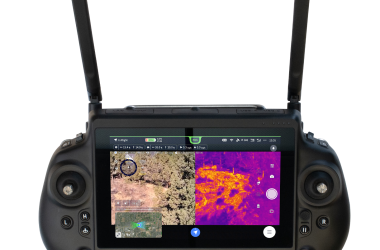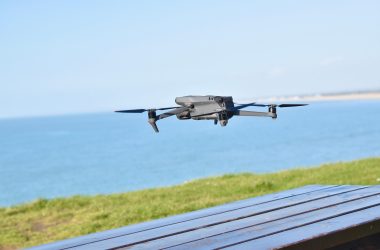Secure, highly reliable wireless connectivity is, of course, critical to safe UAS operations. As drones become more and more ubiquitous, critical missions will require operations in controlled airspace, integrated with other users of the airspace, including airliners and other passenger-carrying operations. These missions will require more secure wireless connectivity than what exists today
Until now, drone flights have relied largely on unlicensed airwaves for the wireless connectivity that allows operators to communicate with and control their UAS. But the use of unlicensed spectrum, according to the Chairwoman of the Federal Communications Commission (FCC), Jessica Rosenworcel, “leaves these aircraft more vulnerable to interference that could disrupt operations.” To ameliorate this situation, the FCC issued new rules on August 29 that, for the first time ever, will allow certain drone operators access to dedicated spectrum “for control operations in circumstances where safety is essential.”
These new rules – 47 CFR Part 88 titled Uncrewed Aircraft System Services – allow operators to obtain dedicated frequency assignments in a portion of the 5 GHz band, 5030-5091 MHz band. https://www.fcc.gov/document/fcc-adopts-initial-rules-drone-operations-5-ghz-band. The FCC notes in its order adopting these new rules, that this is the initial step in a phased approach which ultimately will consider a broader and more intensive use of the spectrum band. Given the scarcity of available spectrum and the many competing interests, dedicating spectrum for UAS uses clearly indicates the federal government’s recognition of the critical importance of UAS to the future of aviation.
What does spectrum mean?
The FCC defines spectrum as: “the range of electromagnetic radio frequencies used in the transmission of sound, data and television.” The FCC manages spectrum by allocating bands for specific purposes. In this rulemaking, the FCC allocates a specific portion of the spectrum for certain UAS operations.
Who will have access to this dedicated spectrum?
These new rules authorize non-networked operations: operations with communications occurring within radio line of sight that meet FCC requirements to access the dedicated spectrum. Those FCC requirements are defined in the rules as “any entity, other than those precluded by section 310 of the Communications Act of 1934, as amended, 47 U.S.C. 310, and that otherwise meets the technical, financial, character, and citizenship qualifications that the [FCC] may require in accordance with such Act, is eligible to be a [non-networked] user and operate [non-networked] stations.” Individual FCC licenses will not be required.
The rules will also allow some networked operations – those that rely on network infrastructure to go beyond radio line of sight of the operator- to access the spectrum but at a lower priority than non-networked operations. According to FCC Commissioner Geoffrey Starks:
“Although we establish a regulatory framework for UAS operating in radio line of sight of an operator, we also permit the use of some ground infrastructure deployment, such as a string of ground stations deployed over a particular and frequently used flight path. The record shows that such use of ground stations is needed for efficient and effective inspections and maintenance of our nation’s critical infrastructures. Use of ground stations will help, for example, the electric utility companies to safely inspect property for damage after a storm, monitor the health of their systems during normal operations, and rapidly identify and address any service disruptions.”
For what operational purpose is spectrum access authorized?
At this time, spectrum access is strictly limited to safety of flight use – basically, operational control and telemetry. For example, transmitting video via the dedicated spectrum would not be authorized nor would communications between unmanned aircraft, including for conflict avoidance. The FCC states that it will consider additional potential uses in future phases.
Are there special equipment requirements?
Transmitters used to access the designated spectrum will need to be certified by the FCC. Before certification by the FCC, the Federal Aviation Administration (FAA) must be notified and approve the equipment.
How will spectrum access be managed?
The rule prescribes an automated system for the temporary assignment of spectrum to registered users. The system is called a Dynamic Frequency Management System (DFMS) and its requirements are contained in Subpart E of the new Part 88. The FCC will approve one or more DFMS administrators to manage the system nationwide. The requirements for administrators are also set forth in this subpart.
Will there be a fee for accessing dedicated spectrum?
It is very likely that fees will be assessed. The rules specifically allow DFMS administrators to set “a reasonable fee for services provided, including usage-based fees for frequency assignments.” The FCC has the authority to review the fees, upon request, “and can require changes in those fees if they are found to be excessive.”
Before a DFMS is authorized, is there an interim process?
Since it will take some time for the FCC to establish an automated frequency designation system (DFMS), the rules authorize an interim process for operators to access designated spectrum. This interim process requires an operator to first obtain FAA approval for spectrum use and then submit an online application to the FCC certifying that:
- They have complied with the FAA concurrence process.
- The operation is in compliance with the Commission’s [Part 88] rules and technical requirements.
- All equipment utilized in the [UAS] operation meets equipment certification requirements.
- Their [interim] frequency assignment terminates immediately in the event a DFMS becomes operational prior to the end of the [interim] frequency assignment.
What is the effective date of these new rules?
Part 88 will become effective 30 days after publication in the Federal Register (FR), except for certain data collection sections that still require the review of the Office of Management and Budget. To date, the new rules have not been published in the FR.








